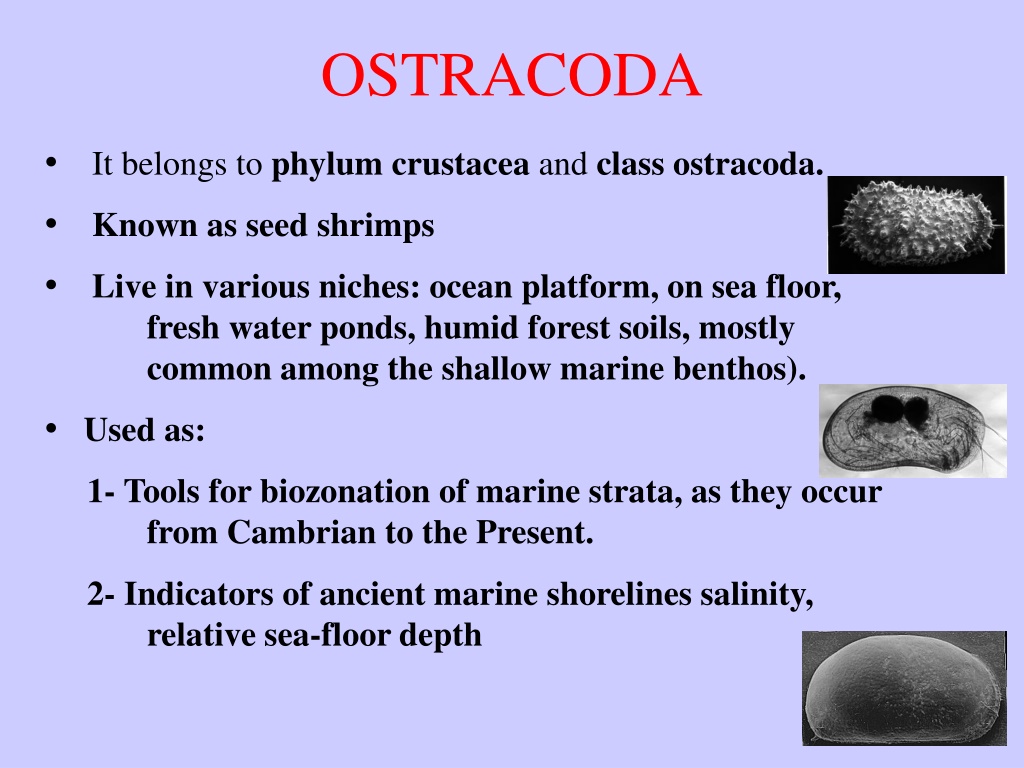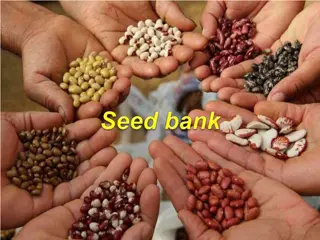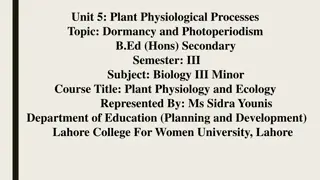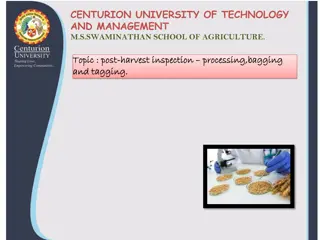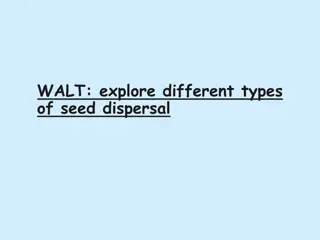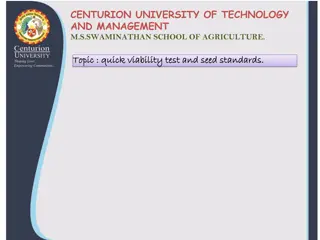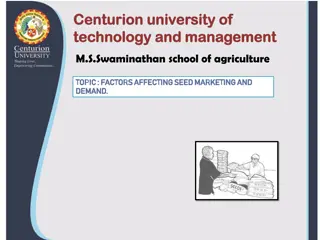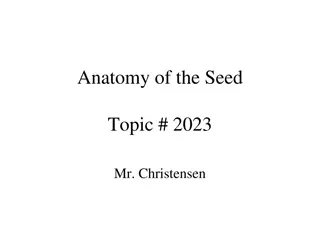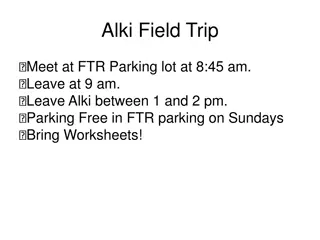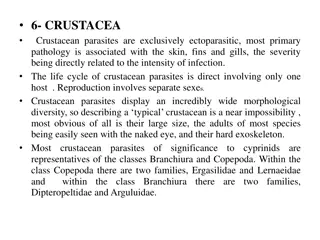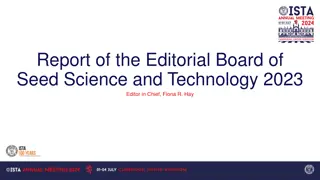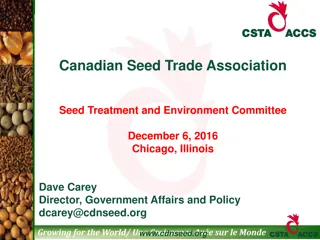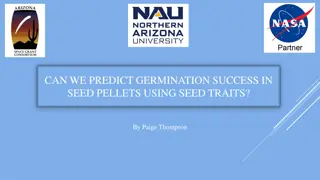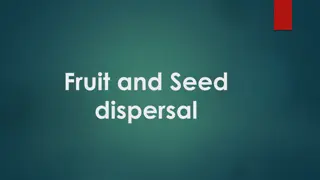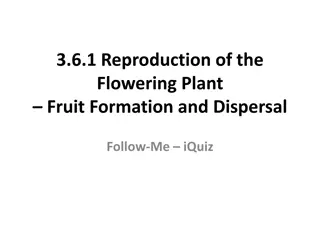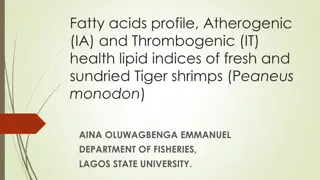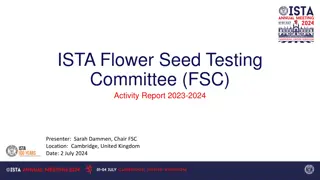Overview of Ostracoda: Seed Shrimps of the Crustacean World
Ostracoda, belonging to phylum Crustacea, are known as seed shrimps and inhabit diverse environments from ocean platforms to freshwater ponds. They serve as valuable tools for biozonation and indicators of ancient marine conditions. Their carapace, composed of chitinous or calcareous material, showcases unique shapes and tactile features. Common ornamentations like spines and wings add to their complexity. The orientation of their shell and distinct morphological elements provide insights into their evolution and adaptation. Explore the world of Ostracoda through this informative guide.
Download Presentation

Please find below an Image/Link to download the presentation.
The content on the website is provided AS IS for your information and personal use only. It may not be sold, licensed, or shared on other websites without obtaining consent from the author. Download presentation by click this link. If you encounter any issues during the download, it is possible that the publisher has removed the file from their server.
E N D
Presentation Transcript
OSTRACODA It belongs to phylum crustacea and class ostracoda. Known as seed shrimps Live in various niches: ocean platform, on sea floor, fresh water ponds, humid forest soils, mostly common among the shallow marine benthos). Used as: 1- Tools for biozonation of marine strata, as they occur from Cambrian to the Present. 2- Indicators of ancient marine shorelines salinity, relative sea-floor depth 1
1) Neocythere denticulata 2) Neocythere vanveenae 3) Mandocythere harrisiana 4) Protocythere albae 5) Cornicytereis larivourensis 6) Cythereis reticulata 7) Cythereis folkestonensis 8) Isocythereis fortinodis 9) Platycythereis gaultina 10) Rehacythereis luermannae 2
MORPHOLOGY OF THE OSTRACOD CARAPACE 1. Composition of carapace: Chitinous (rarely fossilized) and calcareous (fossilized). 2. Size: range from 0.3-30 mm long (average size is typically about 1mm long). 3. Shape: ovate, kidney, or bean-shaped. 4. Carapace consists of two valves (right and left). These two valves are connected at the dorsum by a hinge and separate at the ventral. 5. Valves of a shell are not commonly the same size, so one overlaps the other. 3
6. TACTILE FEATURES (feeling by the surrounding environment): -- Setae (from pore canals and marginal pore canals) -- Eyes (near eye spot/eye tubercle, specially for shallow water forms, deep water forms are blind). 7. Ornamentation: The outer surfaces of the ostracod valves can be smooth or ornamented with pits, striations, reticulations, spines, sulci, tubercles, wings-shaped (alae). 6
ORIENTATION OF THE SHELL From side view: -Rounded end (the highest) )is anterior and pointed end is posterior. -Dorsal outline is convex (often straight), while the ventral outline is straight, concave or sometimes with less convexity. - eye-spot (if present) occur in an anterodorsal position. From dorsal/ventral view: - Broadest region occurs near the posterior From the interior: adductor muscle scars occur near the anterior end. Spines and alae (wings) are generally directed towards the posterior. Ornamentation is heavier at the posterior than is at the anterior. 8
D o r s a l p o s t e r io r a n t e r io r v e n t r a l S id e v ie w V e n t r a l v ie w 9
ONTOGENY Ostracods grow by moulting. There are usually eight moults between the egg and the adult. What is the dimorphism? Dimorphic two shells are typically similar in everything but not in size. Male-shell is generally longer than the female-shell. 10
ARTICULATION Can be done by the following: 1. Ligament (chitinous material, unfossilized) 2. Hinge (teeth, sockets, ridges and grooves) - Adont hinge - Merodont hinge - Entomodont hinge - Amphidont hinge 3. Ridges on the duplicature 4. Adductor muscles (leave muscle scars inside and a subcentral tubercle/sulcus outside). 11
